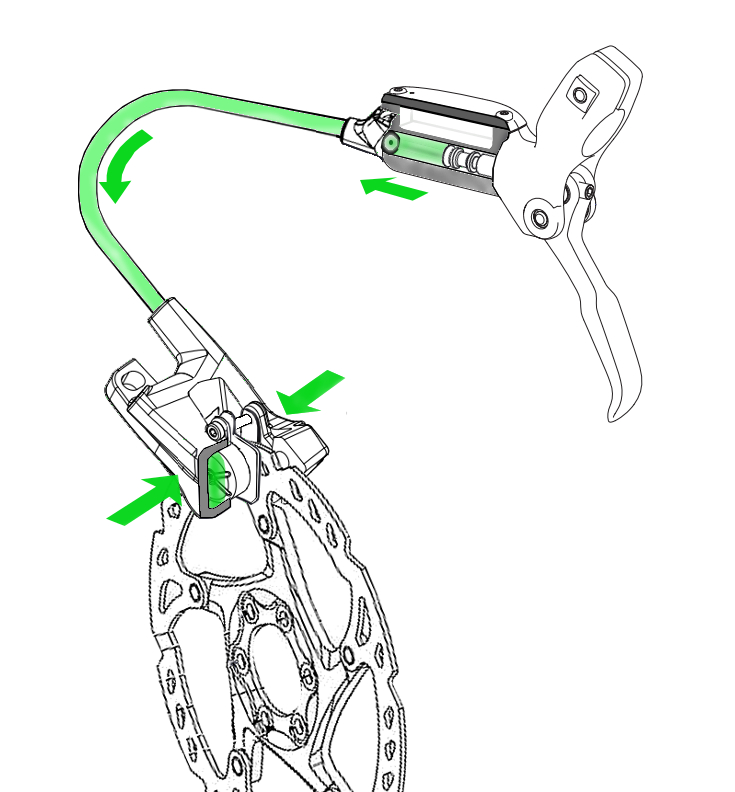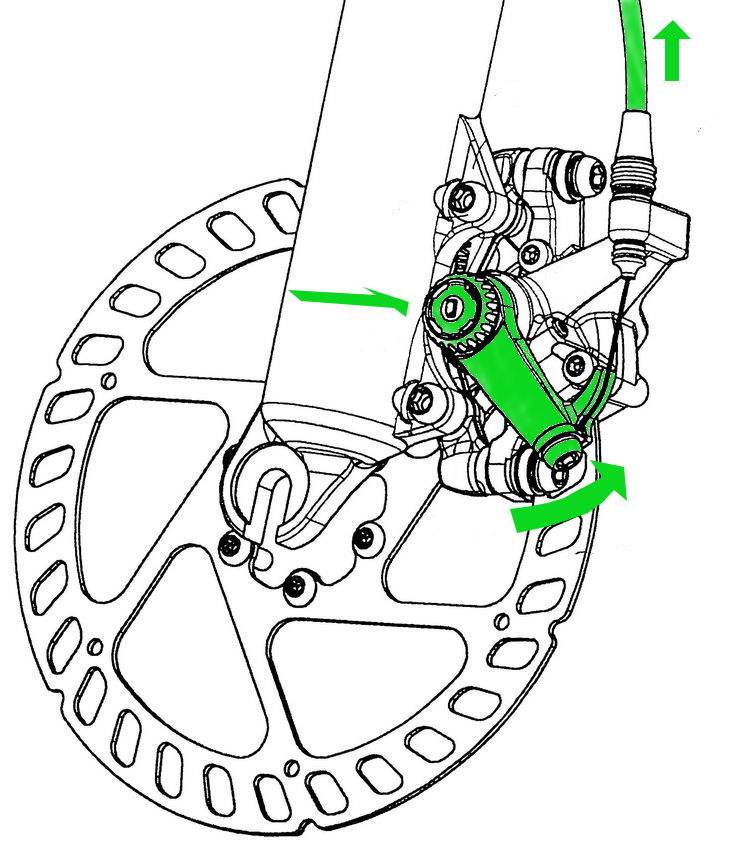by John Brown, HaveFunBiking.com
Disc brakes were introduced on bikes as early as the 1950’s with Shimano making an actual hydraulic disc in the mid 1970’s. There were versions of the Schwinn Stingray series (released in 1971) that came stock with a rear disc brake. Let’s fast forward more than 25 years to the first market acceptable disc brake -The Hayes Mag disc. From its release in 1997, disc brakes have found their way onto most mountain bike, hybrids and now road bikes. With 20 years in development, disc brakes are more powerful and more serviceable than ever before. Read on to learn the basics on how your disc brakes work and how to keep them working well.
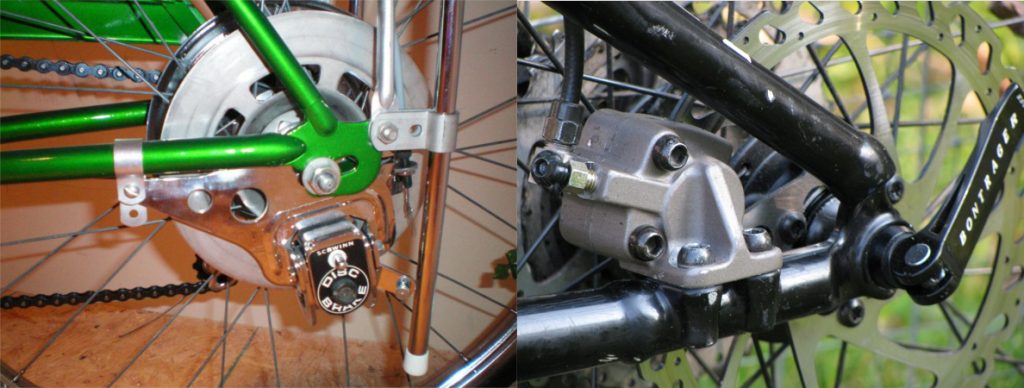
Original Schwinn disc and 1997 Mag brake, both made by Hayes
How Hydraulic Disc Brakes Work
At their most basic, the brake lever moves fluid through a system and that fluid flows to the pads that press on the rotor. There are more details that make one brake work better than another. However, at the root, all disc brakes are very simple. The reasons the system is so simple and works so well is based on the following. Both the pad and rotor materials produce excellent friction. Additionally, the natural properties of fluids help transfer lever force without compression and absorb excess heat.
How Mechanical Disc Brakes Work
Mechanical disc brakes share the same pad materials and rotors as hydraulic systems; Therefore, they have very similar stopping power. Where mechanical system differ is they use a standard brake cable to actuate the brake instead of hydraulic fluid. Mechanical discs have a small lever on the brake caliper that is pulled by the brake cable, moving the brake pads and stopping the bike. The benefits to mechanical disc brakes is a larger lever shape choice, lower cost, and easier adjustment. On the other hand, because mechanical systems don’t use fluid, they are not as powerful and don’t manage heat as well as hydraulic systems. For that reason, on longer descents, mechanical brakes can under perform compared to their hydraulic counterparts.
Why disc brakes are more efficient
Unlike rim brakes, disc brakes don’t rely on a wheel being straight and round. Even if you were to accidentally dent of bend your rim, with a disc, you can still brake confidently. Another reason disc brakes are more efficient is that they produce a massive amount of friction. That friction, in concert with the venting on the disc rotors clears debris off the rotor and allows the brakes to work through all conditions. Ultimately, disc brakes are more efficient because they require less maintenance. In fact, hydraulic disc brakes self-adjust for pad wear they don’t require you to adjust them.
Why adjust the disc brakes caliper
Adjusting the brakes caliper is necessary if you hear the brake rubbing, or if they aren’t helping you stop well. Before adjusting a hydraulic brake, squeeze the lever to determine if you system needs to bled. If the lever feels spongy when you squeeze it, you need to bleed the system. It’s best to take it to your local shop and have the pros handle it. However, If the lever moves freely through its range, then has a firm feel once the pads hit the rotor, you can proceed without bleeding the system.
How to adjust the caliper to eliminate noise on hydraulic brakes
To adjust the caliper, loosen the two fixing bolts on top of the caliper (they may be under the chainstay on road bikes or in front of the rear quick release). Then snug both bolts up until the caliper stays in place, but is still move able with some effort on your part. WARNING! The rotor can be sharp and cause serious injury to your fingers. While spinning the wheel, keep your fingers clear of any spinning part.
While looking into the caliper, try to position it so there is equal space between each pad and the rotor. Once the caliper is centered spin the wheel slowly – in a perfect world there is no noise. If you are hearing the rotor rub on the pads, readjust until you get no noise. In some cases, you may need to straighten the rotor, this is a job best left to a bike shop professional. Once you are happy with the calipers position, tighten down the fixing bolts and you are done!
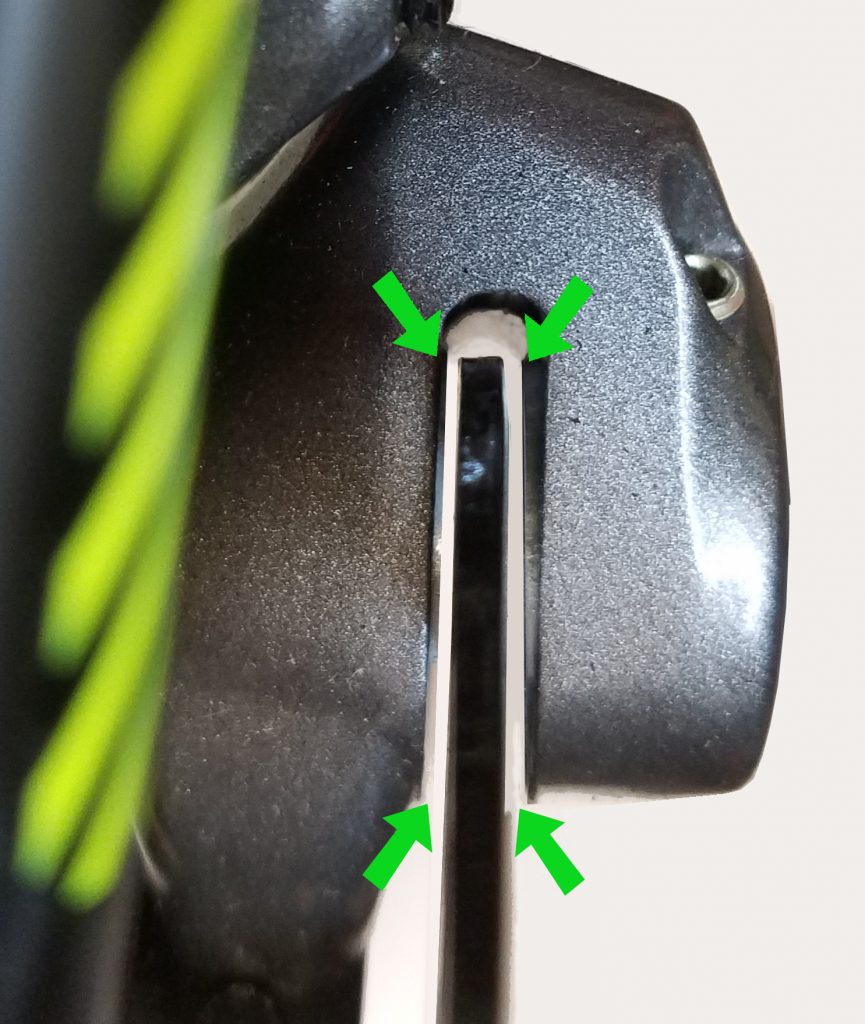
Here you can see equal between the rotor and pads on both sides.
Adjusting mechanical brake performance
If your mechanical disc brakes have recently lost power, or the levers pull too close to the bar, you can easily adjust them for better performance. Before you adjust the brake, inspect the rotor and pads for any contaminants. Usually, contaminants come int he form of chain lube splattered from an over lubricated chain. If you see any oily residue on the rotor, the rotor needs to be cleaned, the pads will also need to be cleaned or replaced before you can proceed (denatured alcohol works well).
Most mechanical disc brakes have a fixed pad, and a moving pad. The moving pad pushes the rotor into the fixed pad, and creates stopping power. Because these brakes operate differently than a hydraulic system, they need to be adjusted differently. First, you want to align the caliper so the rotor is as close as possible to the moving pad without touching. Next, thread the fixed pad in until it is as close to the rotor, but not touching. With both pads in place, loosen the cable pinch bolt on the side of the mechanical brake, pull the cable tight, then snug the pinch bolt again. Continue to adjust until you get the performance and lever feel you prefer.
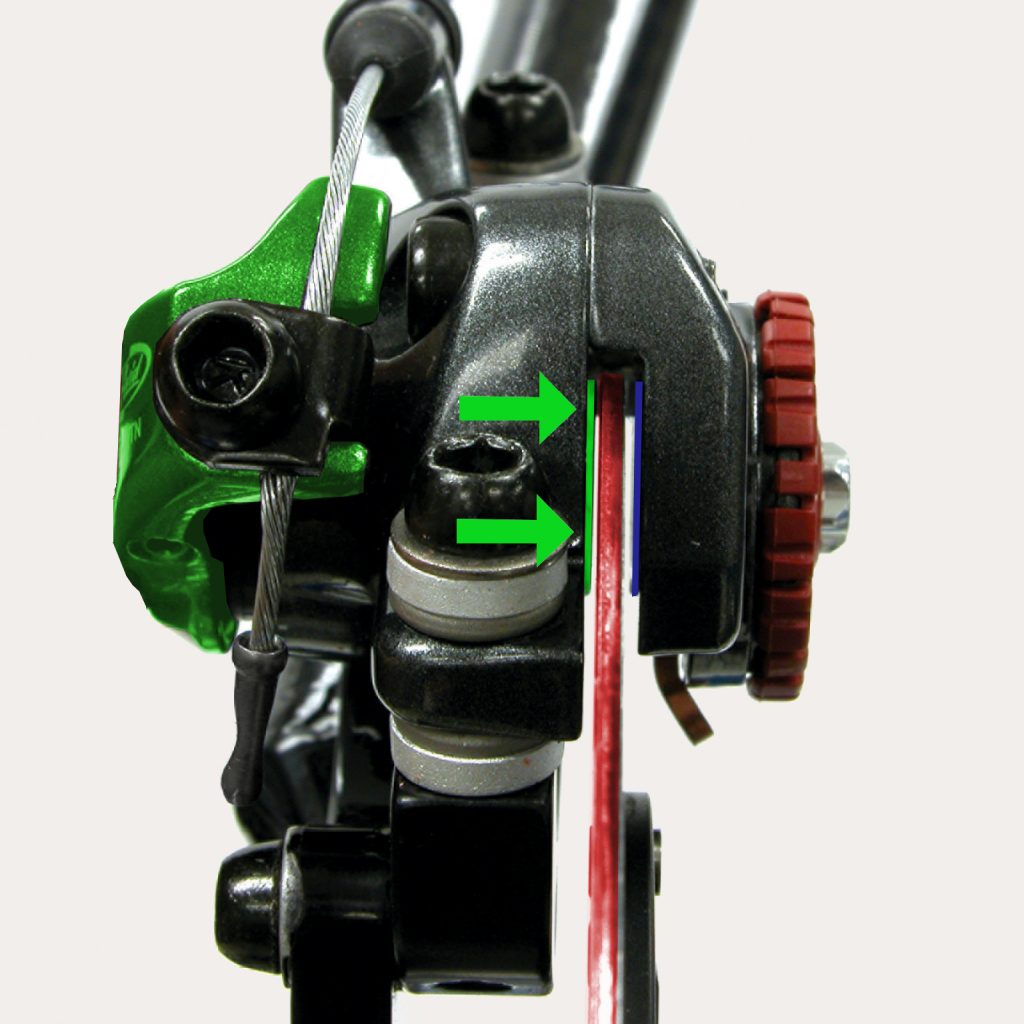
The Lever (green) is pulled, pushing the moving pad (also green) into the rotor (red). The Rotor is then flexed into the fixed pad (blue).
Trouble shooting disc brakes
Lever squeeze
Hydraulic brakes have a mechanism built into the master cylinder that auto adjusts for pad wear. It’s a great little valve that eliminates the need to re-bleed the brake continually as the pad wears. This valve can also lead to problems if you squeeze the brake lever without the wheel in your bike. The brake will adjust as if you just wore through 3mm of pad material (the thickness of the rotor) and not leave enough room between the pads to fit the rotor back in. To solve this issue you can either take the bike into a local shop or find a wide, flat, clean, metal tool to fit within the pads, and pry them apart again.
In cold temperatures
In temperatures below freezing, hydraulic discs that use mineral oil as a fluid can behave differently. As the mercury drops, the mineral oil can thicken and make the lever feel sluggish. You will find that once the temps rise, the brake will feel normal again.
Overall, disc brakes are the next step in brake evolution. They are more consistent, more powerful and easier to actuate than any other type of brake on the market. With every new evolutionary step, there will be some hesitation to try “the new”. Even though there may be some hesitation, you should not fear buying a bike with disc brakes. Thanks to years of iteration and market demand we now have disc brakes that are inexpensive and functional.

